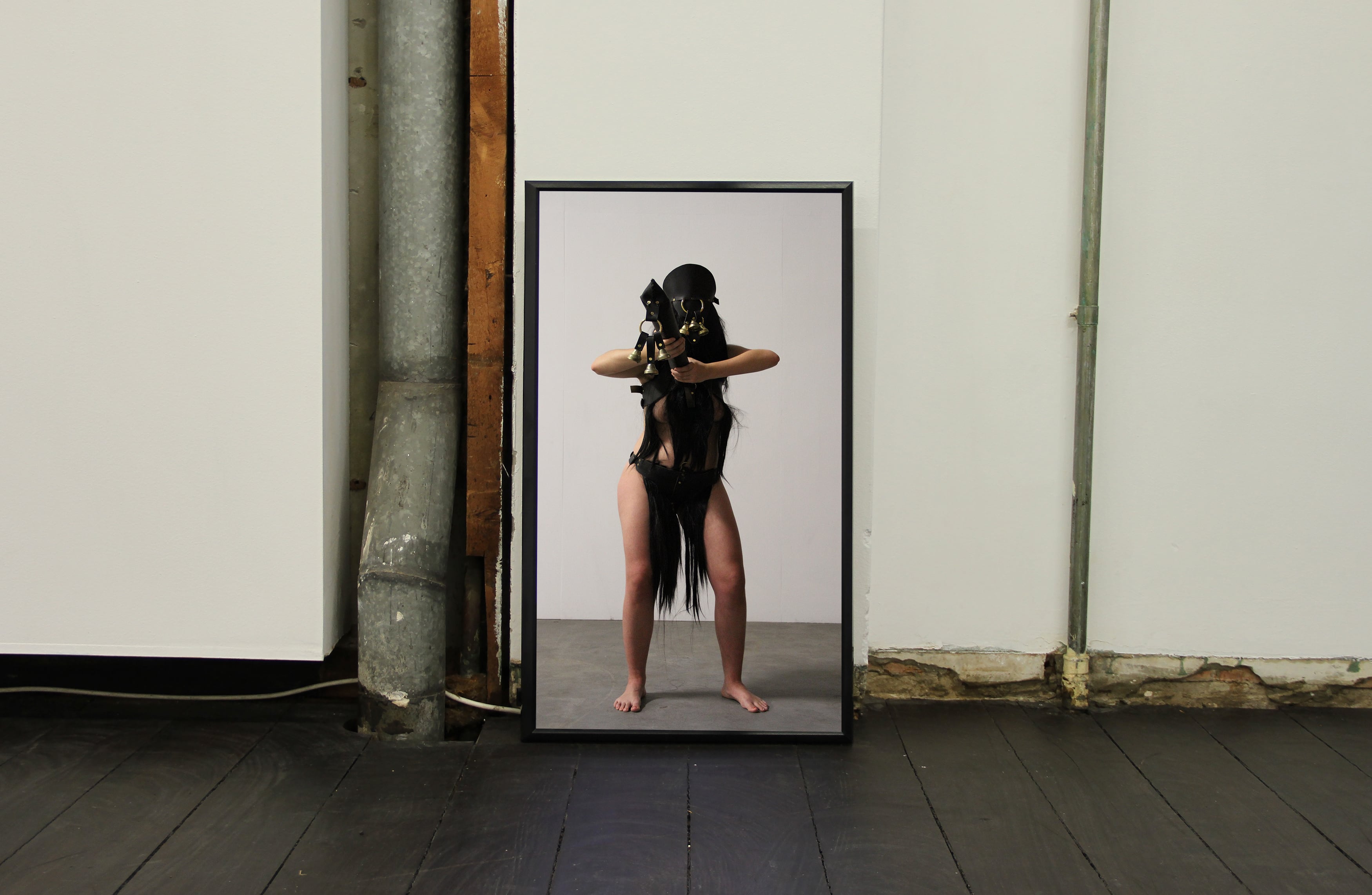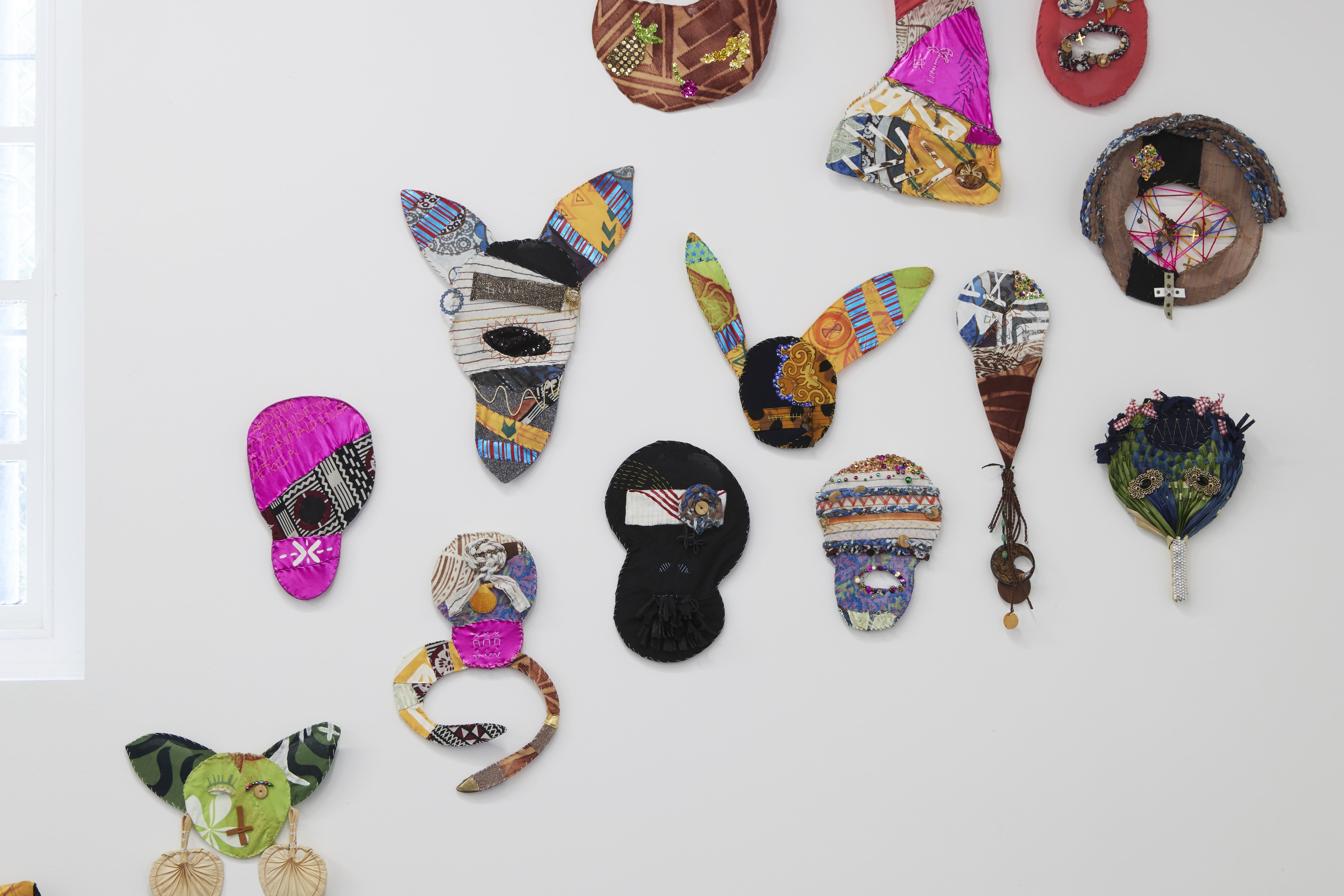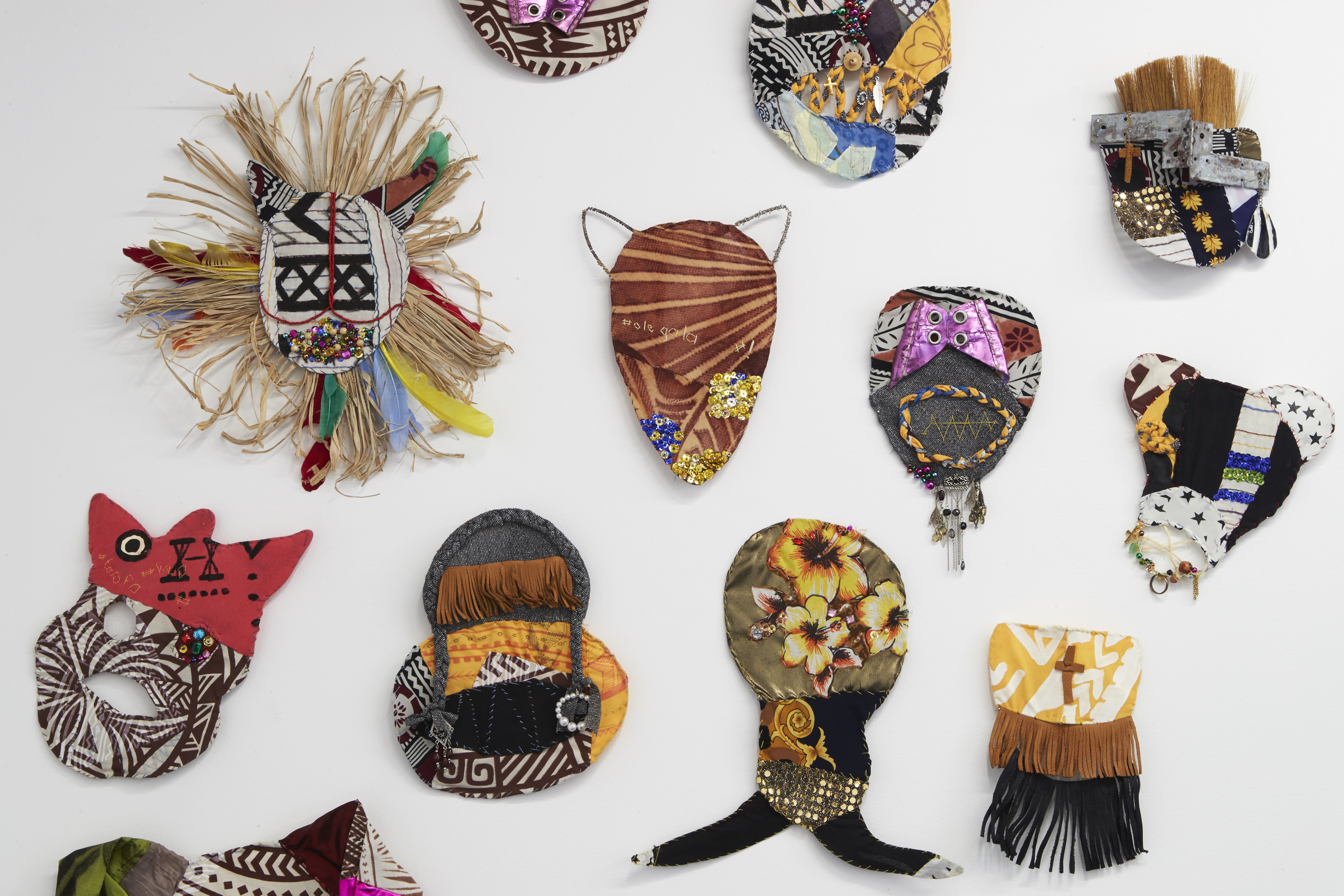


Artists: Naomi Blacklock, Anastasia Booth, Caitlin Franzmann, Chantal Fraser, Clay Kerrigan and Blake Lawrence
Curators: Amy-Clare McCarthy and Kieren Swann
Bells and death shrouds; ancient forests and mythological goddesses. Stitched inscriptions, adorned masks, divination cards, witches’ cauldrons, mystical sigils.
Drawing on things hidden, secret, invisible, mystical and veiled, NETHERWORLDS flutters seductively at the portal between spiritual and material spaces. Curated by Amy-Clare McCarthy and Kieran Swann (McCarthy-Swann Projects), it is a queer and evolving exhibition: this iteration at Seventh Gallery follows versions at Firstdraft (Sydney) and The Walls (Gold Coast), with a final Brisbane leg planned. In each showing, works have been presented differently, expanded and contracted, or swapped out altogether, resulting in a fluid and ever-shifting conversation.
—
Regardless of how the curators and artists of NETHERWORLDS identify, the exhibition is part of a contemporary queer conversation about the reclamation and reworking of ritual. In a 2013 text accompanying their performance event ‘Ritual of Queer Rituals,’ US-based artists A.A. Bronson and Carlos Motta write:
“Ritual is mostly associated with set activities performed by organized spiritual and religious groups. A queer ritual is thus a special kind of ritual, one in which the ritual is ‘queered’ or re-discovered in an attempt to defy the regulation of sexuality and to rescue and disassociate spirituality from normative tradition in a conscious rejection of heterosexual societal norms.” 1
With an understanding of queerness as an intersectional mode of working and being, the possibilities of this definition expand to include ‘normative’ and dominant traditions of all kinds: colonial, patriarchal, able-bodied. The experience of being other - outside of the dominant in whatever way - encompasses both the joyous possibility of slipping outside of traditional binaries and expectations, and the constricting impossibility of fitting within them.
In NETHERWORLDS, rituals are re-imagined and re-defined by the bodies whose inclusion might be rejected in their original forms. The possibilities of crossing over - of transcending earthly boundaries, of changing ones’ own form or straddling modes of being - are suggested through the ritual language that runs through the exhibition: the percussive sounds of imagined ceremony, masked identities, a hint of fire.
—
The powerful women of Anastasia Booth’s video series Portrait (2016) demand immediate attention. Masked and clad in leather, they alternate between a still, powerful stance and a vigorous action: Scylla cracks a whip, Baubo lifts her skirt to shake a bell-covered merkin, Artemis’ black leather staff jingles as she takes aim. Bawdy, aggressive, sexual and decidedly in control, these feminist portraits are positioned at three corners of the gallery, and set the exhibition’s irregular ceremonial rhythm. Silence, jangle-jangle-jangle, CRACK, jangle, silence. Jangle, CRACK, jangle-jangle-jangle.
On the far wall hangs Blake Lawrence’s deep-blue, full-body-length Big Shroud (2016) with an accompanying row of shrouds to the right: eight squares, eye-holes cut out and rimmed with sequins. In the normal course of things, funeral shrouds are marked by the decomposition of the bodies inside them: the body’s edges blur and liquefy as its physical form dissolves back into the earth. Here, Blake Lawrence has worked with the cyanotype process, a method of camera-less photography, to take direct exposures of faces and bodies wrapped in a lightweight cotton fabric. While they are identified by name, the bodies contained within can only be imagined: their distinguishing features - race, gender, colour, size - are blurred and veiled. Un-hemmed and pinned to the wall, Lawrence’s unsettling objects flutter with the slightest breeze or nearby movement.
Facing off with these eyeless shrouds is Chantal Fraser’s ongoing series #traditional #blurred lines (2013-17), a collection of stitched and adorned mask-like objects, patchwork constructions of Polynesian fabrics, gaudy beads and glitz, charms and bells, embroidered text. Fraser’s work draws on a number of sources, including her Samoan heritage, her lived experience as an artist, and the meticulous ritual inherent in the craft process. Defying and problematising the European history of appropriating masks and ceremonial objects for artistic inspiration, Fraser’s joyous and ambiguous forms combine elements to define their own particular framework of being.
The handwritten texts, webcam documentation and sigil drawings of Clay Kerrigan’s ongoing work (2012-2016) suggest a similarly patchworked process of queer and spiritual traditions. Here, pagan ritual, porn, meditation and shamanic practice meet dream-divination, automatic writing, and game-play. Pieced together through a scattering of fragments, the process and outcome remain deeply private, a personal construction of Kerrigan’s self.
In the bubbling cauldron of Naomi Blacklock’s work Lustration (2017) there is an earthy magic that transcends its technological form. The ‘cauldron’ is a large speaker, its black bowl filled with water, hidden within a pyre of stacked branches. As sound pulses from the speaker, the water’s surface breaks into patterns that shift like a glitching screen, bubbling and spitting as the sound grows to a howl. Blacklock’s practice explores the female scream - its repression and power in history and myth. Her pyre suggests the fiery execution method of witches, but this one has something living in it: a tentative spiderweb, perhaps spun by a witch’s familiar, strings between two branches.
Caitlin Franzmann’s interactive work Fortunes of the Forest (2017) comprises a set of divination cards, a hand-made table and two stools. Each card bears a photograph of a plant or mineral found in Queensland’s Karawatha Forest. Seated at the table, I hold the deck in my hands and ask a question: the card I pull out features a photograph of a curved stem covered in blossoms, and the words strong bonds. An accompanying booklet identifies this stem as Xanthorrhoea latifolia, a species of grass tree that grows in Queensland’s Karawatha Forest: its thick black trunk stores resin, a powerful glue for joining spear-heads and sealing water-carriers; its stem provides nectar and seeds. The booklet asks:
“What of connections and strong bonds in your own life?”
Xanthorrhoea latifolia is enormously resilient, and reacts to wildfire by flowering. In NETHERWORLDS, a queer, diverse chorus of voices gesture towards a similarly magical transformation: the fluid boundaries of the body and self opening up to a myriad realms and possibilities.
Anna Dunnill is an artist whose practice investigates the nature of language and communication. She also writes and publishes critical articles, catalogue essays, short fiction and poems.
